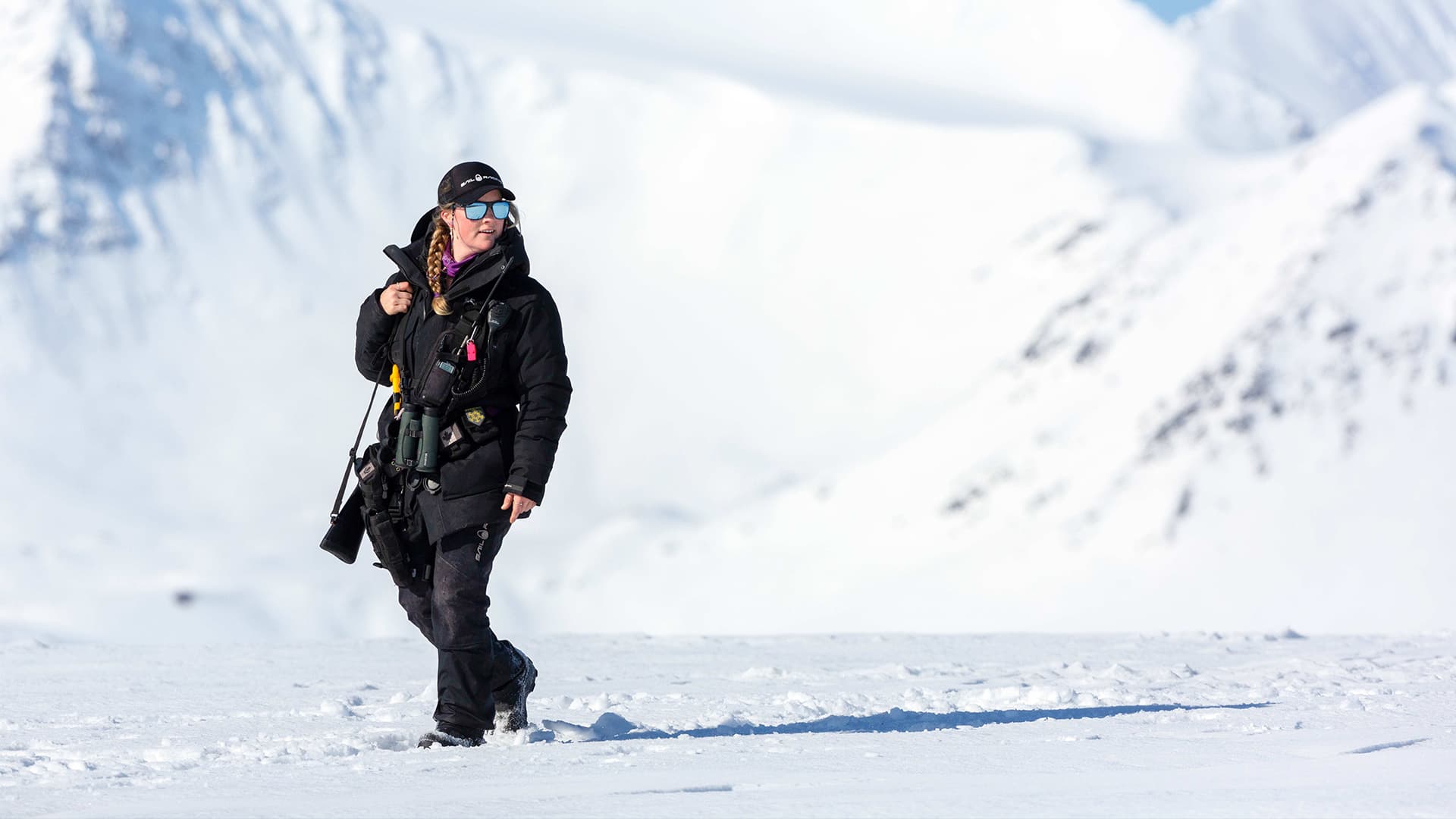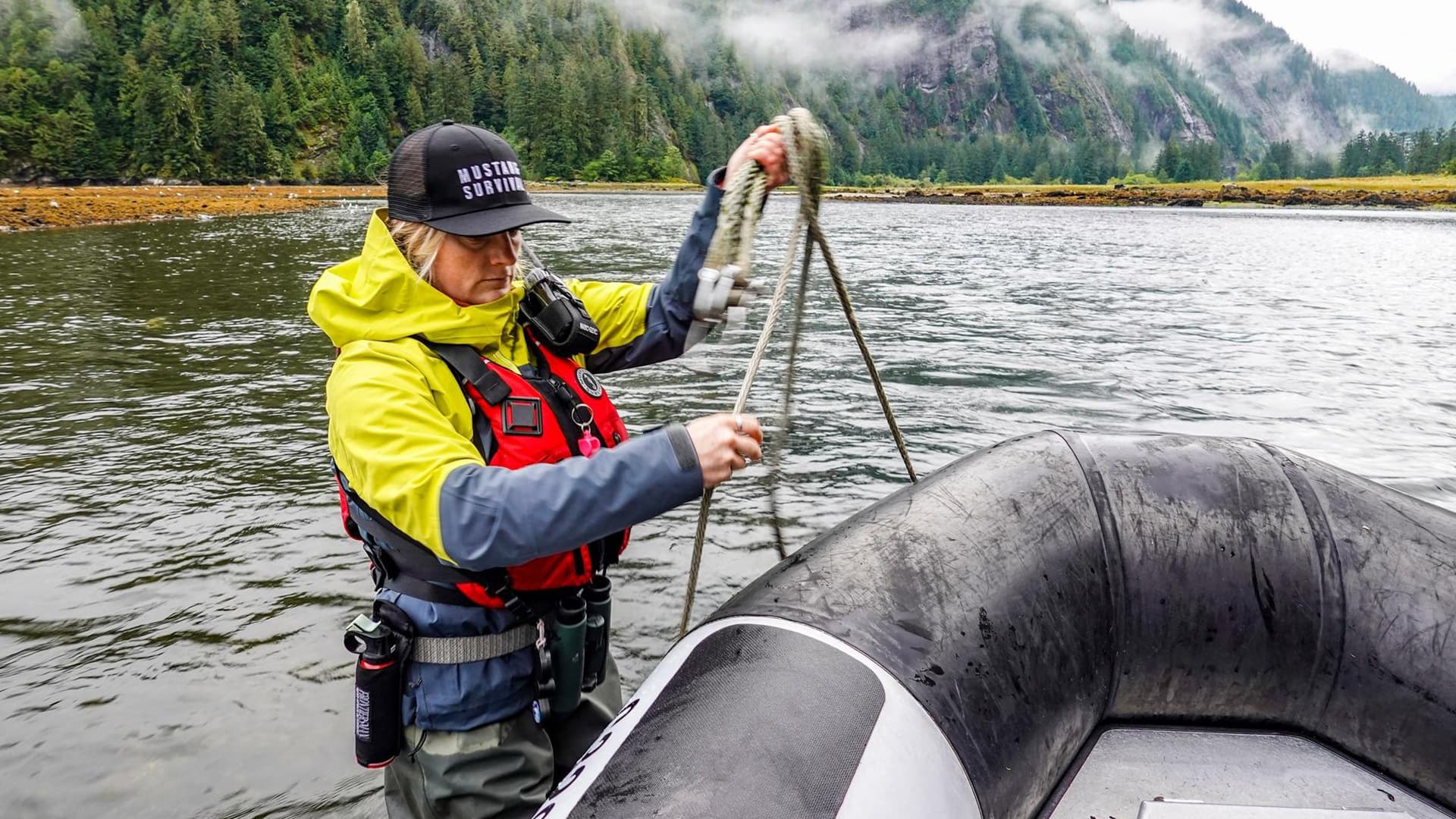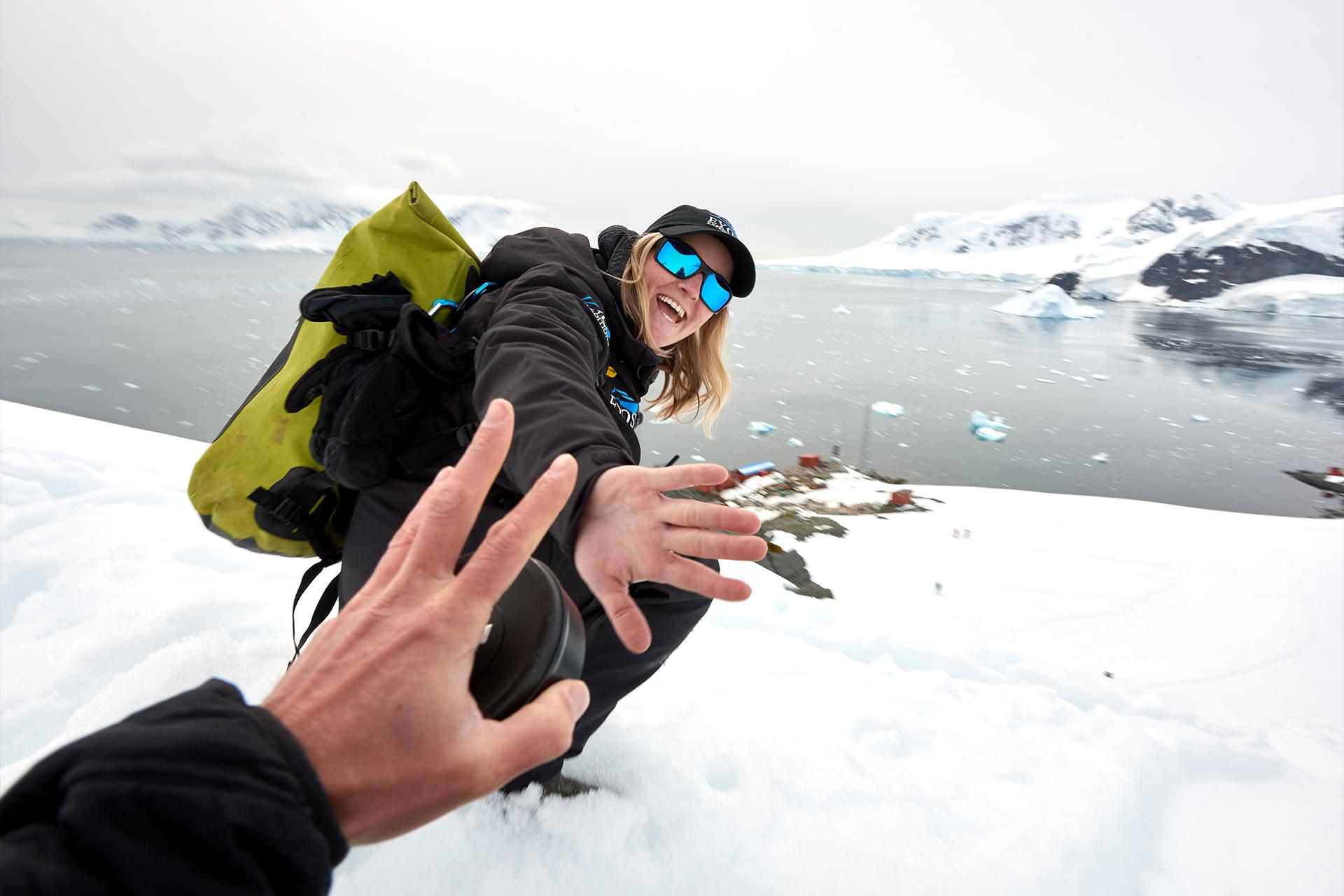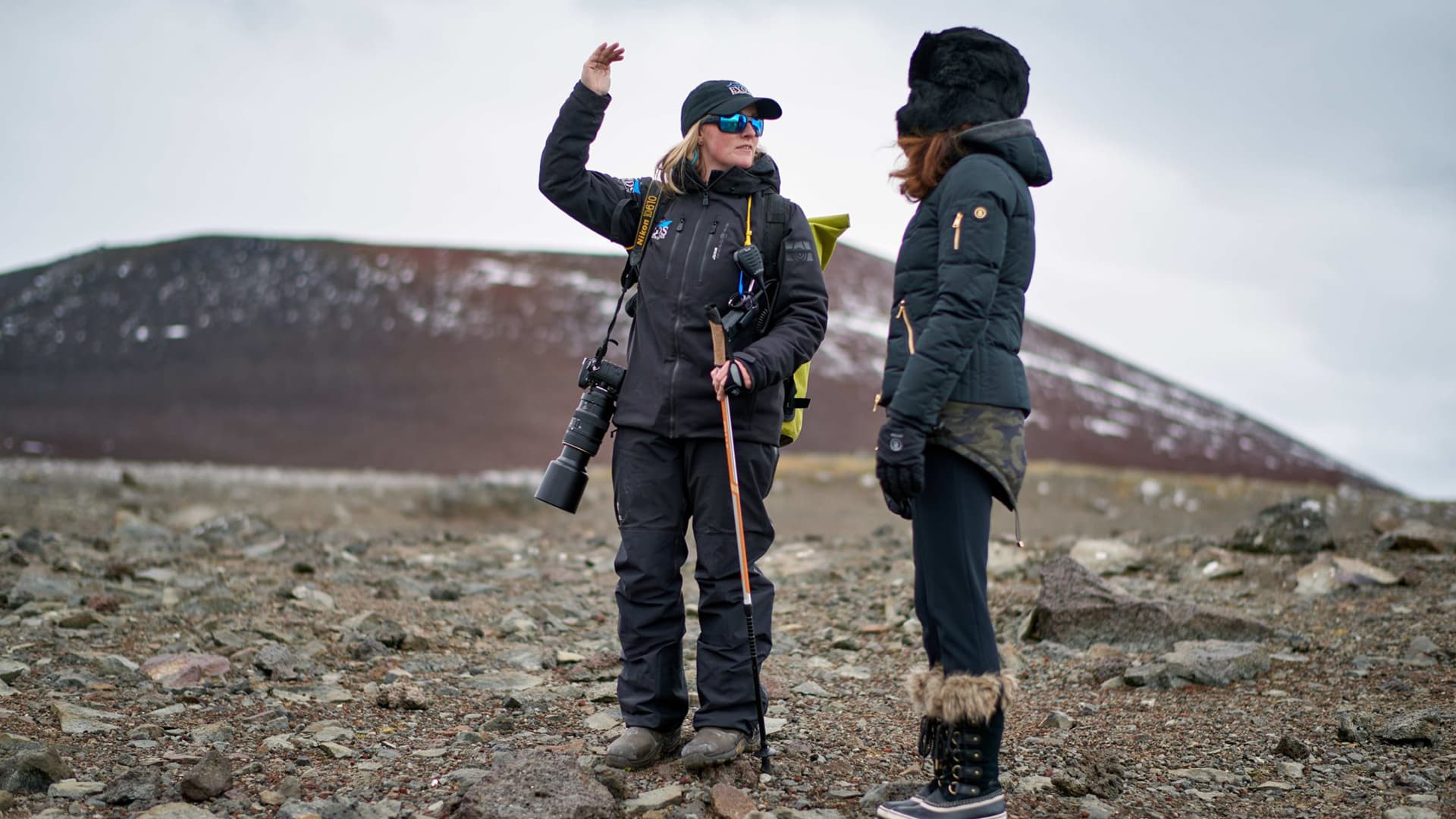Moira Le Patourel is an accomplished expedition guide and photographer whose migrations haven taken her to see some of the world’s most iconic species, from penguins in the Antarctic to belugas and polar bears in the Canadian Arctic, Svalbard and East Greenland, and back home to the west coast of Canada in search of humpback whales, spirit bears and grizzlies.
Join us for a conversation with Moira about wildlife, photography, and the privilege of leading clients to these remote places.

How did your career in the expedition travel industry start? How have your many roles influenced your current position as expedition guide and photographer?
Believe it or not – bears and whales! I have been fascinated by bears and whales for as long as I can remember. I dreamed of spending my working days watching them and photographing them but never knew that working as a guide and Expedition Leader in the adventure tourism world was even a possibility. At the age of 19, I graduated from college and moved to a remote floating lodge on the central coast of British Columbia, starting my career as a bear-viewing and whale-watching guide, naturalist, and kayak guide. I worked my way up to lead guide, eventually managing a team of ten guides and coordinating daily schedules for fifty international guests. I spent six seasons at this lodge, running boats commercially, guiding guests and photographers, assisting with two grizzly bear-focused PhD projects, and spending two seasons as bear safety and guide for a BBC cinematography team. I made the leap to the Canadian Arctic and started working with polar bears shortly after.
Spending so many days in the field, observing the private lives of grizzlies and black bears, gave me the opportunity to specialize in interpreting wildlife behavior; this has helped me exponentially when guiding photography and videography-based expeditions. The art of wildlife viewing is based on the principle of observing, not disturbing. It’s a patience game. Wildlife-viewing guides are responsible for setting the stage for safe and respectful viewing – it doesn’t matter if you’re at the right place at the right time, if the wildlife being viewed and photographed isn’t comfortable, you just won’t get “the shot” or the view that guests are hoping for. I feel strongly that guides need to lead by example and serve as ambassadors for wildlife and wild places, and keep wildlife safe from humans.

Coastal British Columbia is your backyard and your bread and butter as a guide. What sets this destination apart from all the others you travel to?
The Great Bear Rainforest of British Columbia is a destination that is second to none. Here on the shores of the mighty Pacific Ocean, life abounds from every angle. Coastal British Columbia is where the ocean, mountain, and forest ecosystems meet. The big river valleys and estuaries abound with life throughout the seasons: bears and wolves patrol the salmon creeks, elusive spirit bears (creamy-coated black bears) inhabit a few of the mountainous coastal islands, and countless species of birds call both forest and estuary habitats home. Humpback whale calves and mothers cavort in glacial-carved fjords, super-pods of Pacific white-sided dolphins frolic with local boats, and killer whales hunt for either fish or marine mammal prey. It is an incredible feeling to be immersed in this wilderness, absolutely surrounded by life.
In addition to being a seasoned guide, you’re also an accomplished photographer. Do you have any one photo that you are most proud of from your time in the field? Do you have a favorite subject matter or environment to make photos in?
For as long as I can remember, I have loved photographing wildlife. Guiding has allowed me incredible opportunities to spend time in the most wondrous places with scenery and wildlife that I never dreamed I would see with my own eyes. Photography is my way of sharing that privilege with others.
What is the most surprising thing you’ve encountered on an expedition?
Watching polar bears chase and kill reindeer in Svalbard. I’ve been lucky to see this a few times in the past couple of seasons; each time, a very different strategy was used. The most memorable was a mother polar bear and her cub-of-the-year. The bear family was walking along the shoreline and I was driving my group of guests in a Zodiac, so we were on eye level for the whole event. The mother bear parked her cub by the waterline (the cub played fetch with itself, using icicles) and continued slowly down the beach. It was about -20C in the spring in Svalbard and our group of photographers was getting chilled – they asked to return to the ship. My guide-y senses were tingling, so I convinced our cold crew to stick it out a little longer. Not five minutes later, the mother bear dropped right down to the edge of the ocean and got very low to the ground, almost as if concealing herself from something further up the beach. I spotted a sleeping reindeer above the beach ridge with just enough time to get all of my photographers on it, right before the female polar bear charged. The speed at which she moved and the distance she covered in each stride was astounding. She was on the reindeer before it even had a chance to get to its feet, with her cub not far behind. We watched the polar bear pair dispatch the reindeer about 50m from the front from my Zodiac before leaving them quietly to their feast. I think we were all pinching ourselves for at least a few days, over that one.

What is the best part about the EYOS experience for our guests?
EYOS combines the best of the best of the expedition industry to create bespoke experiences in incredible wilderness areas. From the skies to mountain peaks to the ocean’s surface and depths, EYOS guests experience moments that few will ever dream of. A champagne helicopter landing and a submersible exploration in one day? You bet. That’s EYOS.
Expedition travel has been a historically male-dominated industry. How do you see that changing and what has it been like to be a female leader in the industry?
I’ve never met a polar bear or a humpback whale that behaved differently, based on the gender of a guide…I look forward to the time when all humans follow suit.
All jokes aside. Expedition experiences are elevated when multiple minds are involved. Gender doesn’t determine skillset, creativity, long-range spotting abilities, operational strengths, passion, depth of knowledge, grasp of communication requirements, execution of dance moves, etc. Companies that recognize that hire stronger, more diverse teams and, as a result, offer better expeditions.
When I first started in expedition travel, I often found myself as either the only female or one of the few females on an expedition team. In the past few years, I have found myself on several ship bridges and a few times have been pleasantly surprised to be part of an entirely female leadership team – Captain, Chief Officer, Expedition Leader, Assistant Expedition Leader. Each time, we celebrated and then we got on with what we were there to do: provide an excellent expedition. Is it a good feeling when you realize you’ve been hired based on your skills and capabilities rather than gender? Yes. And it should be the norm.
What drives you to continue to travel to remote places?
The desire to explore, to experience, and to observe. Time spent in the wilderness provides a rare opportunity to exist in the “real world”…it recharges you on a higher level than anything else I know.
